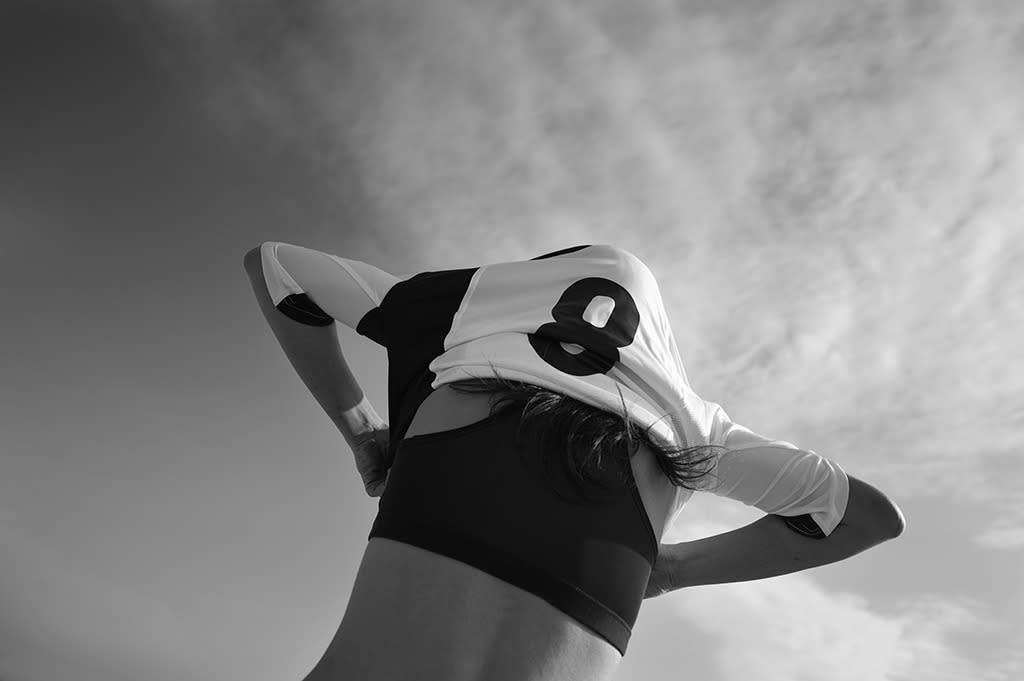The Surprising Reason Why Teen Girls Quit Sports

Body changes during the teen years can be tough. (Photo: Getty Images)
A new study reveals a big roadblock for some adolescent girls when it comes to playing sports: puberty. The findings, published in the Journal of Adolescent Health, revealed a dramatic decline in teen girls participating in sports and gym class at the onset of puberty — in particular, when their breasts started to develop.
Related: Tracee Ellis Ross Shares Heartfelt Video on Inner Beauty
It’s something I can certainly relate to. Much to my chagrin, I developed into a D-cup by the time I was in junior high school. There were few supportive sports bras for my size back then — it was hard enough to find the right fit in a regular bra — and having a fuller bust made it uncomfortable to run track or play volleyball. I felt like my breasts constantly got in the way. I would wear oversize sweatshirts to hide my chest, but it didn’t alleviate the physical discomfort — or stop the teasing from some adolescent boys. Eventually, the pain and my self-consciousness got the best of me, and I stopped pursuing sports. At the time, it seemed easier and certainly less embarrassing not to play. (Thankfully, sports-bra support and sizing have come a long way since then, making it much easier for fuller-busted women like me to do high-impact activities and more.)
In the recent study, which surveyed 2,089 U.K. schoolgirls ages 11 to 18, more than 70 percent said they had at least one breast-specific concern when it came to exercising and playing sports, with breast bounce being the most common complaint. According to an article on the study in the New York Times, the girls also reported “feeling mortified about undressing in the locker room,” as well as “self-consciously reluctant to exercise.”
Nearly 50 percent of girls also reported that their breasts negatively affected their participation in team sports and exercise, and this was even more true for girls with large breasts (63 percent). One of the main problems is how breasts are designed. Joanna Scurr, the lead author of the study and a professor of biomechanics at the University of Portsmouth in England, pointed out to the New York Times that breasts have little internal support. In fact, a different British study also conducted by Scurr found that when girls and women jog or run, their breasts bounce as high as eight inches and move in multiple directions — not just up and down, but also side to side and in and out. So it’s no surprise that half of women find themselves dealing with breast pain while exercising.
Related: Ariel Winter’s Breast Reduction Surgery: How Young Is Too Young?
“We make assumptions about what we think we know, so it’s important to be able to say that as cup size increases, physical activity decreases for a lot of girls,” Sharonda Alston Taylor, M.D., an assistant professor of pediatrics at Baylor College of Medicine in Texas, who focuses on adolescent obesity, told the New York Times.
Part of the problem is that while boys who participate in sports and physical education are often told to wear protective gear, such as cups and athletic supporters, young girls are rarely given recommendations or mandates to wear supportive sports bras, according to the New York Times. The most recent study found that only 10 percent of girls reported always wearing a sports bra while playing sports and exercising, while more than half said they’d never worn one.
The researchers concluded that educating girls about breast development and supportive bras is also important. The vast majority of girls in the study — nearly 90 percent — told researchers that rather than getting information about breasts through a website or an app, they wanted a girls-only, in-person session with a female teacher starting around age 11.
Building girls’ self-esteem is also a key factor as they grapple with how their bodies are changing during puberty. “The physiological and physical changes that accompany female growth during adolescence can be mystifying, terrifying, and unwelcome for a young girl,” Mia Holland, chair of the studies in human behavior programs at Capella University, tells Yahoo Beauty. “Adolescence brings a certain level of self-consciousness that only an adult can reflect upon with wisdom. This self-consciousness is exacerbated when young girls begin to grow breasts and show other signs of puberty, such as pubic hair growth and menses.”
Related: Teenage Girls Do Not Need Genital Cosmetic Surgery
Girls who develop earlier than their friends often have a harder time adjusting to these changes and can have lower self-esteem, notes Amy Bohnert, associate professor of clinical and developmental psychology at Loyola University Chicago. “Given the number of girls that are maturing earlier, it is important to start body education earlier,” Bohner tells Yahoo Beauty.
Holland says that both parents and teachers must have an open line of communication with girls about breast development, including what to expect as you grow and develop. “It should also include the hands-on assistance to find the right sports bra or tops that will provide the right amount of support and comfort for a particular activity or sport,” she says, “and the importance of self-acceptance for all types of body sizes, including breast size.”
She adds: “Young girls are bombarded by a multitude of negative body image messages daily. Therefore, the conversation about breast development, how to care for one’s breasts, and how to accept one’s breasts and body should be had.”
Let’s keep in touch! Follow Yahoo Beauty on Facebook, Twitter, Instagram, and Pinterest.


